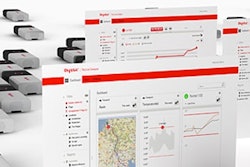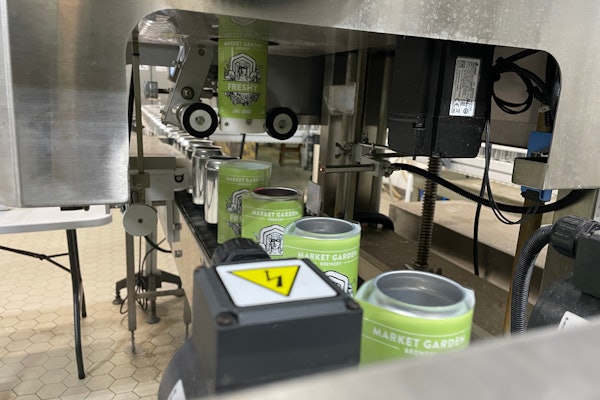If the machine is an integral part of your line, you’re entering into a relationship that is more akin to a marriage. Here are a few things to consider:
1. Be transparent and consistent. Suppliers can only quote solutions based on what you’ve told them. If you’re not consistent with the information you provide to suppliers, you’re not getting apples-to-apples comparisons. Try to avoid keeping small pieces of information from certain suppliers just because they seem inconsequential. Often, they can be quite the opposite.
2. Look for industry-specific experience. A company whose strength is in snack packaging may not be the wisest choice for a frozen entrée application. Manufacturers often build areas of strategic expertise around certain industries and applications. Request customer references for applications in your industry.
3. Don’t make assumptions based on past history. Don’t automatically eliminate a supplier because of a supposedly poor reputation or a bad experience from long ago. Conversely, don’t skip customer reference checks from a supplier with a supposedly good reputation. Things change all the time, and companies that provided bad service years ago may provide good service today, and vice-versa.
4. Get out of the office and look around. It’s vitally important to go out and look at different machines in person—whether at the supplier’s plant or another customer’s operation. For some packagers, there seems to be an overreliance on equipment suppliers to make the case for their machines. A supplier salesperson can visit your site many times before you learn what’s possible from one visit to a machine supplier’s factory. If a trip to the supplier’s factory isn’t worth it, it’s likely not a good fit. Most importantly, when dealing with vendors, consultants, packaging distributors, and other end users, remember this: No question is a dumb question.
5. Learn the supplier’s processes. As you will likely be entering into a long relationship with your vendor, you need to know how they act or react in a given situation, from sale to delivery, from testing to implementation, and from training to support. Although all of these processes can be stipulated in the contract, it’s really a good idea to see how the vendor normally carries out such processes. If you force a supplier into agreeing to something they don’t normally do, it stands to reason that they may have some problems fulfilling that obligation. Look at service: Do they have service in the country you’re in; in the continent you’re in? Do they have a 24/7/365 support line? How soon can they get to you? What’s their guaranteed time to get a mechanic to you? Things break, screws fall out all the time, the world is an imperfect place; how willing are they to help you with the machine when it inevitably breaks? Finally, try to choose vendors with qualified service technicians stationed close by. Paying travel and accommodation expenses for “factory-trained” service reps isn’t a bargain. Companies without good transparent processes leave you open to mistakes; look closely at every detail of the proposed relationship. Knowledge of processes can also give you a leg up on risk analysis and mitigation of issues that may arise.
6. What kind of relationships do they have with other vendors? As it’s unlikely you’ll be equipping an entire line with machines from one vendor, it’s important to know how they conduct themselves when they need to integrate with disparate machines both upstream and downstream. Is the supplier interested in trying to understand your process? What happens downstream of their machine? If you’re looking at robotic machinery, look at the vendor’s capability and experience in integrating robotics.
7. Can they take on integration? If you’re looking to purchase some major pieces of machinery, maybe you’d like to completely outsource integration issues to one of the equipment suppliers—without hiring an integrator. If you can find a supplier that meets all of your other criteria, assess whether that supplier can also serve as a single integrator with full accountability.
8. Involve operators and maintenance techs. Many experts on both sides of the table believe there is not enough involvement of people actually running the equipment in the buying decision, and that purchases are made at too high of a level. Maintenance people and production people need to contribute a clear set of expectations. Get firsthand feedback from operators, the people on the line, because the operations teams are solving whatever problems your existing machines have day after day. Conduct a project kickoff meeting with personnel, including engineering, operations, tooling, and control teams, to clearly define what will and won’t work in your factory. It could be valuable to involve human resource personnel in the kickoff meeting, as they might have specific insight into the technical knowledge of a given workforce in a given plant. The best machine in the world won’t work at all if your operators lack the skill set required to use it!
9. Pay attention to machine construction details. When you’re looking at machines, take a hard look at machine construction details such as finish, platings, welds and general durability. You know the conditions in your plant better than any supplier ever could. Does the construction of their machines look like it would stand up to your environment?
10. Assess flexibility. How willing and able are they to customize the machines to your needs? Every plant is different—can they adjust to that?
11. Find out how they react when the chips are down. When things go well, everyone slaps one another on the back. But when a project runs into trouble, you don’t want suppliers pointing fingers at one another. Though you may not get it, try asking for a customer reference on a difficult install to learn what the supplier has done to make it right.
12. Clearly define and communicate your critical success factors. And if a supplier is unwilling to agree to those factors, it may be time to walk away. Setting milestones for schedule and revision is key; highlight your management’s expectations and cost schedule. Is the supplier amenable to these factors? Work closely with the application engineers in the project management group, throughout the entire process. Too often communication dries up after the initial purchase is made. Figure out exactly what you need from an overall system, and communicate that. Is the supplier willing to engage in open communication, with weekly status meetings? It’s important that you have clear objectives of what you want to accomplish, that you communicate those objectives, and that you have qualified personnel on hand at installation. Make sure it’s clear that you’re only prepared to accept the equipment in the manner that it was specified. You also have the responsibility to deliver information about variations in your product or process to the supplier, before you actually receive the new equipment, so that the supplier can determine any changes that might need to be made.
13. Commitment to support during start-up. Vendors must commit to being present as long as it takes to install the line successfully. This requirement must be clearly defined in the specifications. Whatever and whenever your start-up is, if you’ve defined it, and the vendor has signed off on it, the vendor must honor that commitment.
Liked this article? Download the End of Line Playbook here. Download the Primary Playbook here.


























